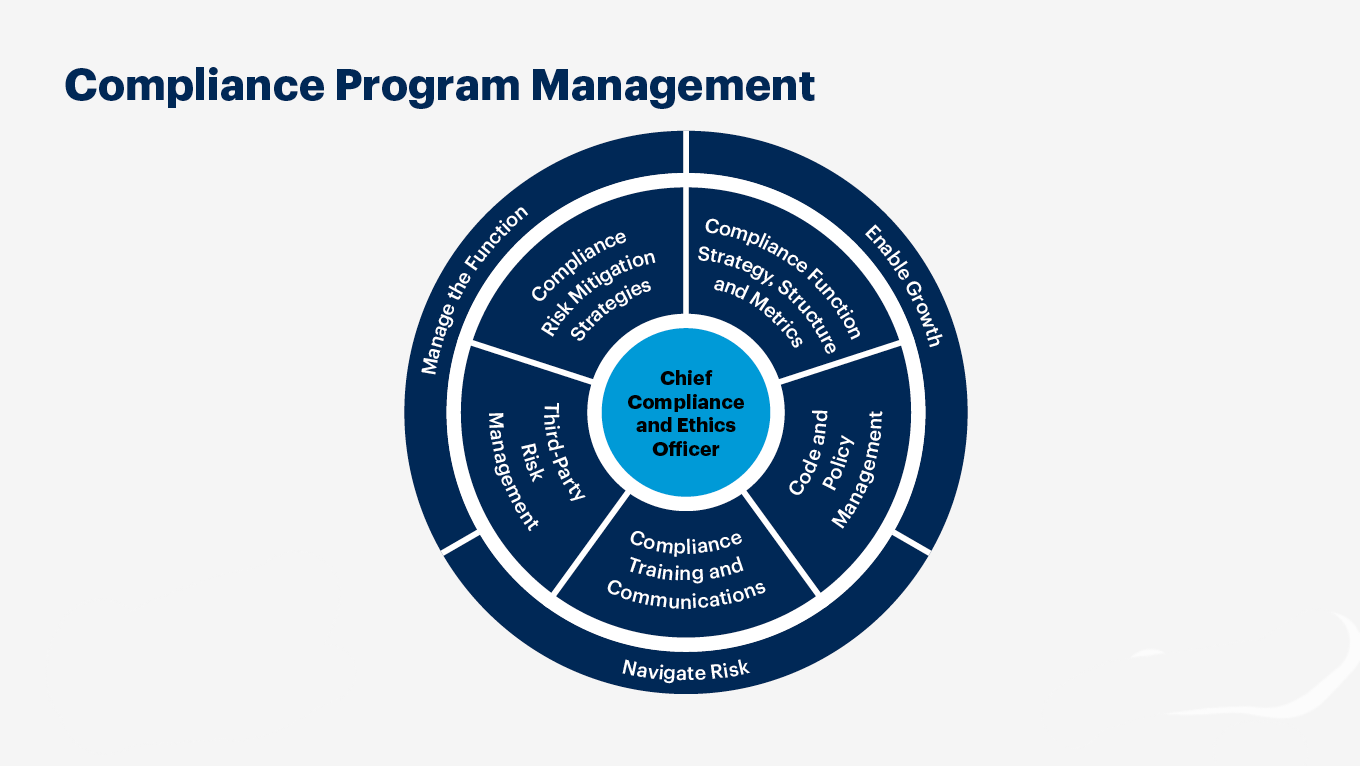
New Chief Compliance Officer: First 100 Days Toolkit
New Chief Compliance Officer: First 100 Days Toolkit
Assuming the role of Chief Compliance Officer (CCO) is a pivotal moment, marking a significant step in an organization's commitment to integrity and risk resilience. The first 100 days in this executive position are not merely an onboarding period; they represent a critical window to establish credibility, understand the intricacies of the existing compliance landscape, identify immediate priorities, and lay the groundwork for a robust, future-ready program.
Navigating this initial phase requires a strategic, phased approach, supported by the right insights and technological enablement. This toolkit outlines key actions for a new CCO to drive impact, foster trust, and embed a culture of compliance from day one.
The Strategic Imperative of the First 100 Days
The pressure on a new CCO is immense. Stakeholders expect rapid assessment, clear direction, and tangible progress. A structured approach during these initial months allows a CCO to:
- Build Foundational Relationships: Engage with the Board, C-suite, legal, IT, HR, and business unit leaders to understand their perspectives and build vital alliances.
- Conduct a Rapid Program Assessment: Quickly grasp the current state of compliance maturity, identifying strengths, weaknesses, and critical gaps.
- Prioritize Key Risks & Initiatives: Determine immediate "fire drills" and strategic priorities that align with the organization's overarching business objectives.
- Define a Clear Vision & Roadmap: Articulate a compelling vision for the compliance function and outline a pragmatic roadmap for achieving it.
Phase 1: Assess & Understand (Days 1-30)
The initial month is dedicated to comprehensive listening and rigorous data gathering. This deep dive is crucial for building an informed perspective before making significant changes.
- Conduct a Listening Tour: Schedule one-on-one meetings across all levels—from the Boardroom to operational teams. Understand their challenges, perceptions of compliance, and areas of concern. This qualitative data is invaluable.
- Review Existing Documentation: Immerse yourself in current policies, procedures, risk registers, internal and external audit reports, incident logs, and previous compliance assessments. Look for patterns, recurring issues, and unaddressed risks.
- Identify Immediate Risk Exposures: Collaborate with internal audit and risk teams to pinpoint any critical non-compliance issues or pending regulatory deadlines that require immediate attention.
- Assess the Technology Landscape: Understand the tools currently used for GRC. Are they disparate systems? Are processes largely manual? This assessment is key to identifying automation opportunities.
Phase 2: Prioritize & Plan (Days 31-60)
With a solid understanding of the current state, the next phase focuses on synthesizing information, prioritizing actions, and developing a strategic blueprint.
- Comprehensive Risk & Gap Analysis: Consolidate findings from Phase 1. Categorize identified risks by severity, likelihood, and potential impact. Identify critical compliance gaps that hinder the organization's ability to meet its obligations.
- Develop a Strategic Roadmap: Outline both short-term "quick wins" (achievable within the first 100 days or soon after) and longer-term strategic objectives (12-18 months). Align these priorities directly with business goals and risk tolerance.
- Assess Resource Alignment: Evaluate the current compliance team's capabilities, staffing levels, and technological resources. Identify areas where additional support or investment may be needed.
- Leveraging Technology for Efficiency: Implementing Risk Cognizance: This is the opportune moment to introduce or optimize a robust Governance, Risk, and Compliance (GRC) platform. Risk Cognizance offers a strategic advantage in this phase:
- Rapid Deployment: Within 30 minutes, you can have Risk Cognizance up and running, immediately centralizing critical compliance data and automating initial assessments. This quick time-to-value is invaluable in the fast-paced first 100 days.
- Scalable Use Cases: Its comprehensive nature supports a large number of use cases, allowing you to address immediate SOC 2 concerns while laying the groundwork for broader regulatory compliance (e.g., GDPR, HIPAA, industry standards) and Enterprise Risk Management Software.
- Current Requirement Support: Risk Cognizance supports current regulatory requirements and is continuously updated to address evolving mandates, ensuring your foundational plan is future-proof.
- Proof of Concept (POC) Solution: A POC allows you to quickly demonstrate its value, ensuring seamless support and integration with your existing systems and proving its capability to stakeholders from the outset.

Phase 3: Execute & Communicate (Days 61-100)
The final phase of the first 100 days is about initiating action, demonstrating progress, and building momentum through effective communication.
- Launch Quick Wins: Address the top priorities identified in Phase 2. This could involve updating a critical policy, automating a key control, or resolving a lingering audit finding. Demonstrating early success builds trust and buy-in.
- Initiate Strategic Projects: Begin the groundwork for longer-term initiatives identified in your roadmap. This might include a comprehensive Post-Quantum Crypto Agility Risk Assessment, a new Vendor Risk Management Software implementation, or a detailed review of data privacy controls.
- Communicate Progress & Vision: Regularly update the Board and C-suite on your progress. Articulate how your initiatives directly support strategic business objectives and mitigate critical risks. Transparency builds confidence.
- Empower Teams with Tools: Ensure your compliance and operational teams are fully trained and leveraging platforms like Risk Cognizance. Its Compliance, Policy Management Software, and IT & Cyber Compliance Management Software modules empower teams to execute efficiently, centralize evidence, and maintain continuous compliance.

Risk Cognizance: Your Strategic Partner for the First 100 Days and Beyond
Risk Cognizance is more than just a software platform; it's a strategic enabler for the modern CCO. It provides the Integrated Connected GRC Software that allows you to gain holistic visibility into your organization's risk and compliance posture from day one.
- For Assessment & Understanding: Leverage Risk Cognizance for immediate inventory of your compliance obligations, policies, and controls. Its IT & Cyber Risk Management Software module quickly highlights areas of technological exposure.
- For Prioritization & Planning: Utilize the platform's Risk Management Software capabilities to conduct robust risk assessments, link risks to specific controls, and prioritize remediation efforts with data-driven insights. Our Regulatory Change Management Software ensures your plan accounts for future shifts.
- For Execution & Communication: Deploy Compliance and Policy Management Software to streamline control implementation and ensure consistent policy adherence. Use Internal Audit Management Software and Case and Incident Management Software to manage findings, track remediation, and provide real-time updates to stakeholders, proving tangible progress.
By integrating Risk Cognizance early in your tenure, you establish a powerful foundation for continuous compliance, robust risk management, and a culture of proactive governance. Its rapid setup and comprehensive capabilities mean you're not just reacting to challenges, but strategically shaping a resilient future.

Charting a Course for Enduring Impact
The first 100 days as a Chief Compliance Officer are an intense yet immensely rewarding period. By adopting a structured approach, building key relationships, and strategically leveraging powerful tools like Risk Cognizance, a new CCO can not only navigate this critical transition successfully but also lay the groundwork for a compliance program that delivers enduring value, fosters trust, and strengthens the organization's strategic resilience for years to come.

.jpeg)
